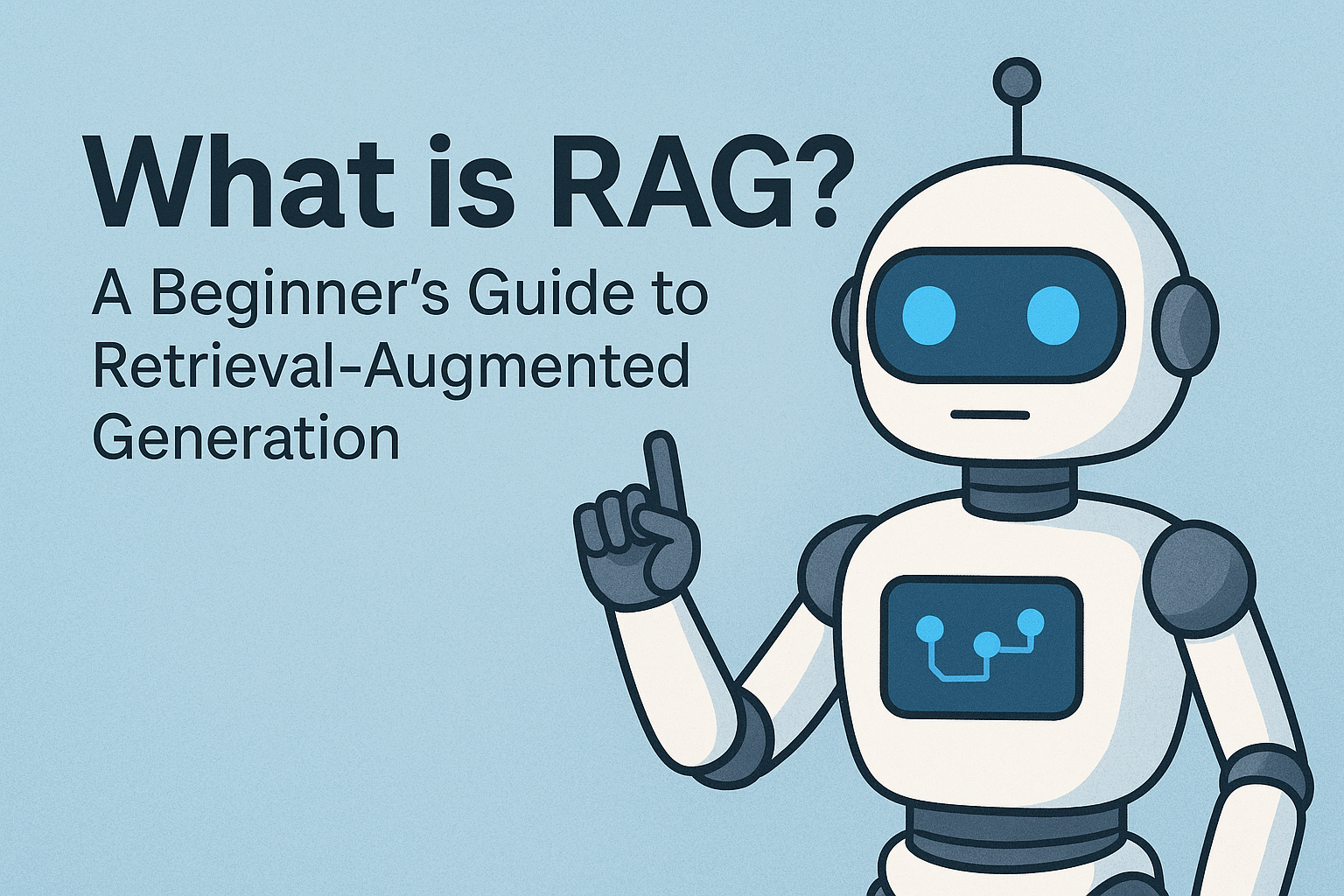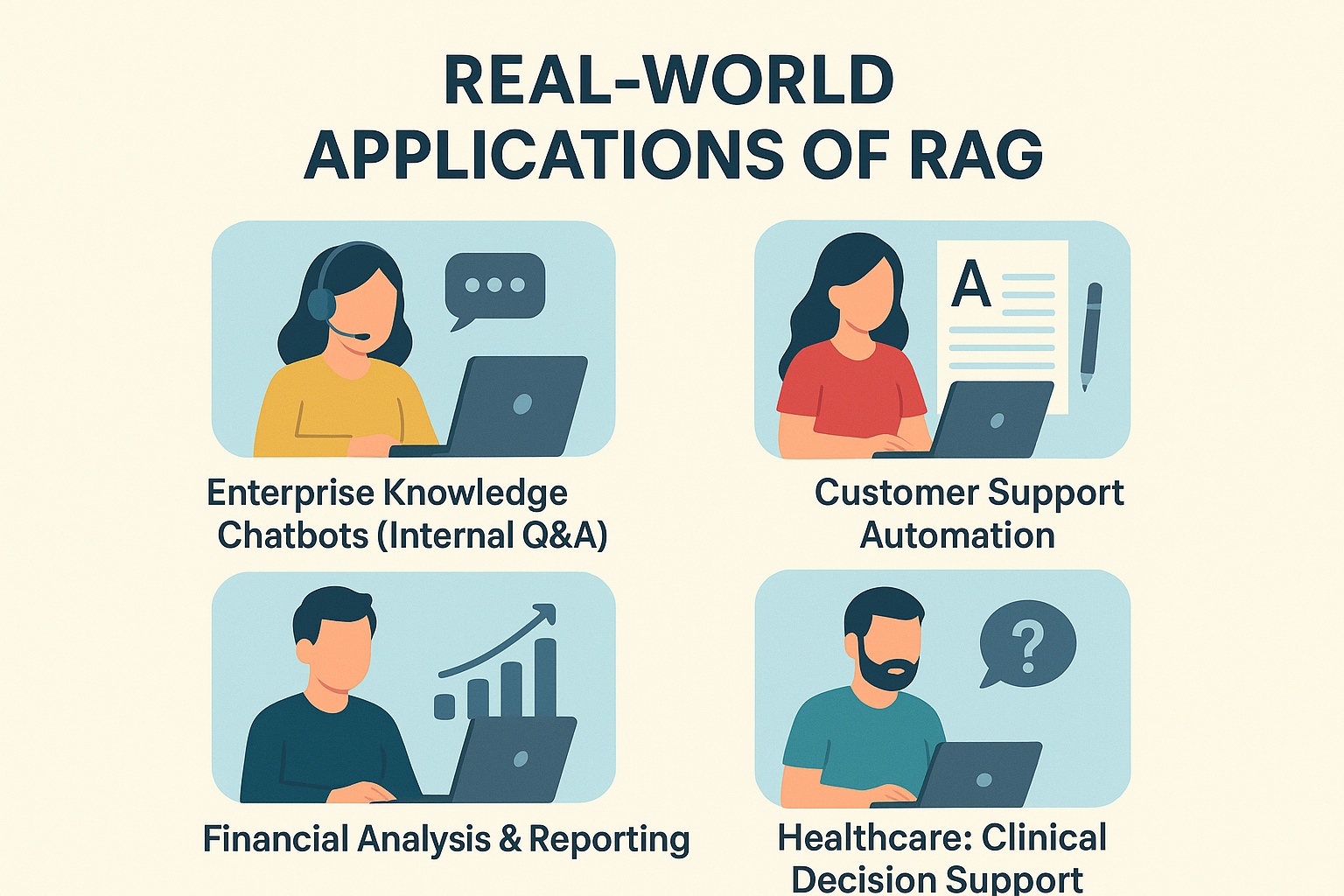
Imagine a brilliant student who has spent years memorizing every book in the Library of Congress up until 2023. We’ll call this student the Large Language Model (LLM). They can write beautiful essays, solve complex equations, and speak 50 languages. They are confident, articulate, and fluent.
But ask them about a new law passed yesterday, or about the specific policy manual for your company, and they will run into two major problems:
- The Knowledge Cutoff: They literally don’t have the new information.
- The Hallucination Trap: Because they are trained to sound confident, if they don’t know the answer, they will often confidently make one up, creating a believable but utterly false response.
This is the fatal flaw for enterprise AI. You can’t trust a genius who lies when cornered.
Retrieval-Augmented Generation (RAG) is the solution. It is like giving that brilliant student a personal, real-time librarian and a massive, searchable index of every new, proprietary, and up-to-date document in your organization. Before answering, the student consults the librarian (the RAG system), gets the relevant facts, and then writes the answer, making sure to cite the sources.
RAG bridges the gap between the LLM’s fluency (how well it speaks) and its factual grounding (how true its statement is).
What is RAG? Understanding Retrieval-Augmented Generation
Retrieval-Augmented Generation (RAG) is an AI framework that enhances large language models (LLMs) by combining retrieval (fetching relevant data from external sources) with generation (crafting human-like text). Unlike traditional LLMs that rely on static, pre-trained knowledge, RAG dynamically pulls information from a knowledge base—think documents, databases, or even the web—to deliver accurate and contextually relevant responses.
The Key Components of a RAG Pipeline
Implementing RAG involves a beautiful dance between several components. Let’s build the pipeline step-by-step.
1. The Knowledge Base: Your Private Library
This is your collection of documents—PDFs, Word docs, internal wikis, database records, or website content. This is the “pantry” of information the AI will draw from.
2. The Retriever: The Efficient Librarian
When a user asks a question, the RAG system doesn’t send it directly to the LLM. First, the “Retriever” springs into action.
-
Step A: Chunking: Your documents are broken down into smaller, manageable “chunks” to make search efficient.
-
Step B: Vectorization: Each chunk is converted into a numerical representation called a vector embedding. This captures the semantic meaning of the text.
-
Step C: Vector Search: The user’s query is also converted into a vector. The system then performs a lightning-fast search in the Vector Database (like FAISS or Pinecone or Weaviate) to find the text chunks whose vectors are most similar to the query vector.
3. The Generator: The Master Storyteller
Now comes the augmentation. The retrieved relevant chunks and the original user query are combined into a new, super-powered prompt for the LLM(like GPT, Llama, or Mistral).
Sample Code Snippet (Python with LangChain):
from langchain.embeddings import HuggingFaceEmbeddings
from langchain.vectorstores import Pinecone
from langchain.llms import OpenAI
from langchain.text_splitter import RecursiveCharacterTextSplitter
# Chunk documents
text_splitter = RecursiveCharacterTextSplitter(chunk_size=500, chunk_overlap=50)
documents = text_splitter.split_documents(raw_documents)
# Initialize embeddings and vector store
embeddings = HuggingFaceEmbeddings(model_name="sentence-transformers/all-MiniLM-L6-v2")
vector_store = Pinecone.from_documents(documents, embeddings, index_name="rag-index")
# Query and retrieve
query = "What are the latest renewable energy advancements?"
docs = vector_store.similarity_search(query, k=3)
# Define LLM prompt
prompt = f"""
You are an expert assistant. Use the following retrieved information to answer the query accurately and concisely. Avoid adding unverified details.
Retrieved Documents: {docs}
Query: {query}
Answer:
"""
# Generate response with LLM
llm = OpenAI(model_name="gpt-3.5-turbo")
response = llm.generate(prompt=prompt)
print(response)
In this snippet, RecursiveCharacterTextSplitter chunks documents into smaller pieces for better retrieval precision. The prompt instructs the LLM to use only the retrieved data, ensuring the response is factual and relevant. Tools like LangChain make RAG pipelines accessible, even for beginners.
How RAG-Powered LLMs Outshine Traditional LLMs
Traditional LLMs, like early versions of GPT, rely on knowledge baked into their training data. While impressive, this approach has limitations: the data can become outdated, and the model may “hallucinate” incorrect facts when it lacks context. RAG-powered LLMs overcome these hurdles by fetching external information in real time, making them smarter and more reliable.
Here’s a quick comparison:
| Aspect | Traditional LLM | RAG-Powered LLM |
|---|---|---|
| Knowledge Base | Fixed at training time | Dynamic, updates instantly |
| Information Currency | Months/years old | Real-time, always current |
| Accuracy for Specific Data | Often generic or wrong | Precise and verifiable |
| Hallucination Risk | High for unknown topics | Low (grounded in documents) |
| Source Attribution | Cannot cite sources | Can cite exact documents |
| Cost to Update | Requires expensive retraining | Just update documents |
| Private Data Access | Impossible without retraining | Seamless integration |
| Response Speed | Fast | Slightly slower (includes retrieval) |
For example, if you ask, “What’s the latest on AI regulations in 2025?” a traditional LLM might give a generic or outdated answer. A RAG-powered LLM, however, retrieves recent articles or legal documents and crafts a precise, up-to-date response. This makes RAG ideal for knowledge-intensive tasks where accuracy is critical.
The Unbeatable Benefits of RAG and Why It’s Not Just Fine-Tuning
RAG offers several advantages that make it a game-changer in AI. Here’s why it stands out and how it compares to fine-tuning, another common approach to improving LLMs:
Benefits of RAG
-
Real-Time Knowledge: RAG pulls from dynamic sources, ensuring responses reflect the latest information without retraining.
-
Accuracy and Trustworthiness: By grounding responses in external data, RAG reduces hallucinations and boosts factual accuracy.
-
Customization: Businesses can plug in their own knowledge bases (e.g., product manuals or FAQs) for tailored AI solutions.
-
Cost Efficiency: Updating a knowledge base is cheaper and faster than retraining an LLM.
-
Scalability: RAG works across industries, from healthcare to customer service, handling diverse use cases with ease.
RAG vs. Fine-Tuning
Fine-tuning involves retraining an LLM on a specific dataset to improve its performance for a particular task. While effective, it has limitations. Below is a table highlighting the most crucial differences:
| Aspect | Fine-Tuning | RAG |
|---|---|---|
| Primary Purpose | Adjusts model behavior, style, or task-specific performance (e.g., classification, tone) | Enhances factual accuracy by retrieving external knowledge for responses |
| Knowledge Updates | Frozen at training; requires retraining to update knowledge | Always current; updates by adding new documents to the knowledge base |
| Cost | High; requires significant computational resources and expertise | Low; updating a knowledge base is simpler and less resource-intensive |
| Transparency | Black box; cannot cite specific sources for responses | Transparent; can cite exact documents used for answers |
| Best For | Tasks like text classification, style adaptation, or sentiment analysis | Factual question answering, document-based queries, and dynamic knowledge tasks |
For example, a fine-tuned LLM for medical diagnostics might excel at predicting diagnoses but struggle with new research unless retrained. A RAG system, however, can instantly query updated medical journals, making it more adaptable and cost-effective for knowledge-driven applications.
Real-World Applications of RAG

Let’s explore how organizations across industries are leveraging RAG to transform their operations.
- Enterprise Knowledge Chatbots (Internal Q&A):
- Use Case: Employees ask complex HR, IT, or legal questions (e.g., “What is the policy for remote work stipends in Q4?”).
- RAG’s Role: It queries the latest internal policy manuals (PDFs) and provides a specific, cited answer, ensuring compliance and consistency.
- Customer Support Automation:
- Use Case: A customer asks, “How do I troubleshoot error code 404 on the new Model Z?”
- RAG’s Role: It pulls the latest technical specifications and troubleshooting guides from the private documentation system, providing an accurate, detailed solution instantly.
- Legal and Regulatory Research:
- Use Case: A lawyer needs to summarize recent court decisions relevant to a specific case.
- RAG’s Role: It searches a vast, specialized database of case law and statutes, grounding the summary in the exact text of the legal documents.
- Financial Analysis & Reporting:
- Use Case: Generating a report based on the company’s latest quarterly earnings call transcript and internal sales figures.
- RAG’s Role: Accesses real-time data from financial databases and proprietary reports, preventing the LLM from relying on old or public market data.
- Healthcare: Clinical Decision Support:
- Use Case: Doctors face complex diagnoses or need to determine the best treatment plan for a rare disease.
- RAG’s Role: It rapidly scans massive, ever-evolving medical databases, including the latest treatment guidelines, peer-reviewed journals, and active clinical trial data. This allows the LLM to assist doctors by retrieving evidence-based information, significantly supporting faster and better decision-making, and reducing reliance on memory alone.
These applications show how RAG’s ability to combine real-time data with natural language generation unlocks endless possibilities for businesses and individuals alike.
Why RAG is the Future of AI
Retrieval-Augmented Generation is like giving AI a superpower: the ability to stay curious, fetch the latest knowledge, and share it in a way that’s clear and engaging. By bridging the gap between static language models and dynamic information, RAG is paving the way for more accurate, adaptable, and trustworthy AI systems.
Whether you’re a business looking to enhance customer support, a researcher seeking faster insights, or a developer building the next big AI app, RAG offers a flexible and powerful solution. As vector databases improve and LLMs become more efficient, RAG’s potential will only grow, making it a cornerstone of AI innovation in 2025 and beyond.
Have you tried a RAG-powered tool yet? Or maybe you’re curious about building your own? Drop your thoughts in the comments, and let’s keep the conversation going!
And if you found this guide helpful, share it with your team. Let’s build a future where AI is not just intelligent, but reliably informed.

Rupendra Choudhary is a passionate AI Engineer who transforms complex data into actionable solutions. With expertise in machine learning, deep learning, and natural language processing, he builds systems that automate processes, uncover insights, and enhance user experiences, solving real-world problems and helping companies harness the power of AI.

